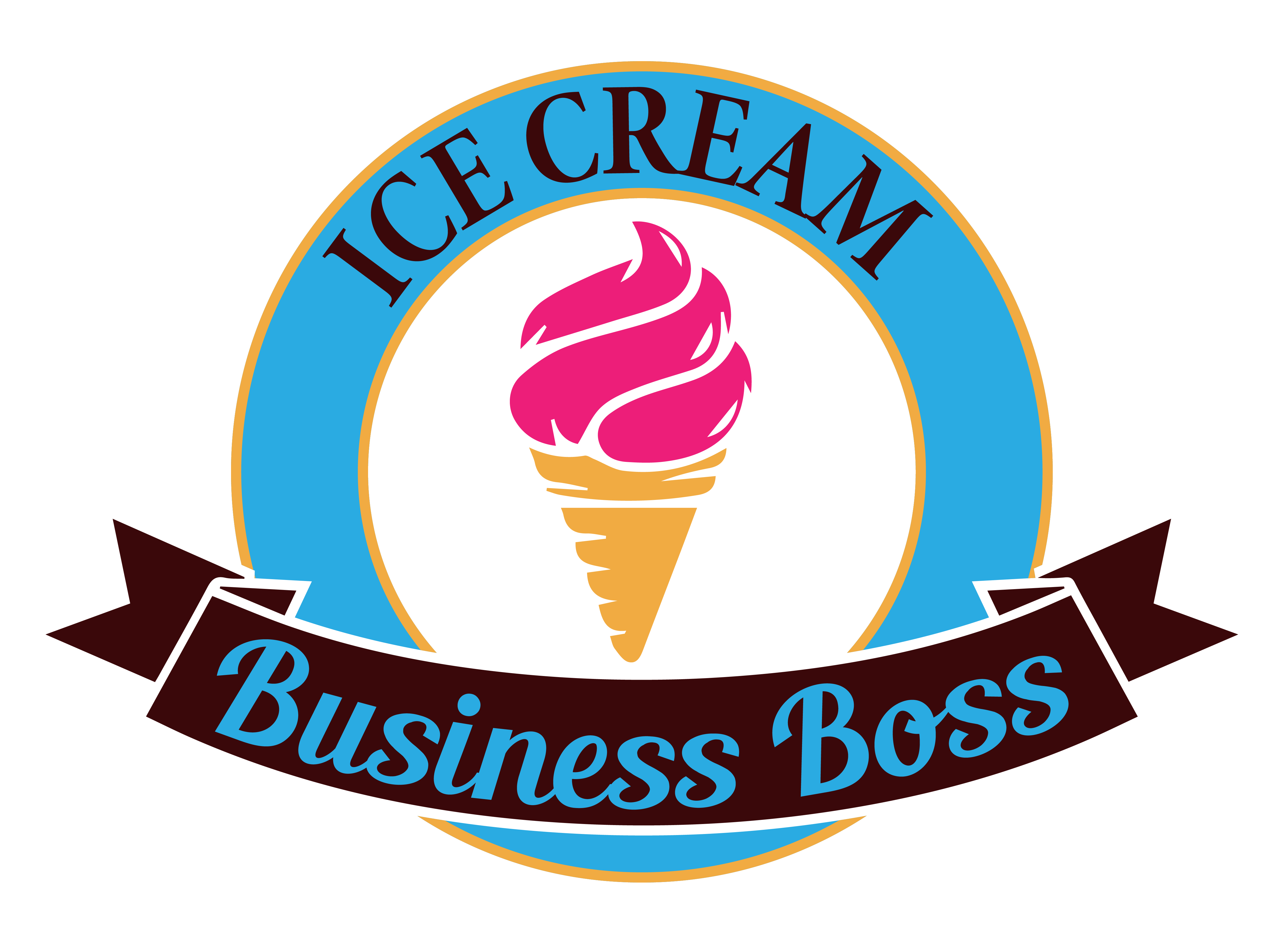Ice cream is one of those things that everyone loves. Its delectable combination of flavors, textures, and temperatures has the power to brighten even the darkest of days. Imagine being the mastermind behind a factory that produces these frozen delights on a large scale, bringing joy to people of all ages. If you’ve ever wanted to start your ice cream factory, you’re in for a treat.
To set up an ice cream factory, you should begin with a business plan, secure funding, find a suitable location, obtain permits and licenses, purchase equipment, source ingredients, hire staff, develop recipes, establish distribution channels, and focus on quality control and marketing to build a productive operation.
Crafting Your Business Plan
A solid business plan is a requirement before starting the ice cream production process. This crucial document should include your ice cream factory’s overall vision, mission, and goals. It’s not just about making delicious frozen treats; it’s also about figuring out who you are and what you want to achieve.
Consider important elements in your business plan, such as the precise ice cream varieties you want to produce, the target market you want to reach, and the unique qualities that will set your products apart from the competition. This thorough road map serves as your compass as you navigate the challenging environment of starting and maintaining a prosperous ice cream business.
A well-organized business plan that is packed with strategic insights requires ongoing work. It changes as your company does, giving you the flexibility to overcome obstacles and take advantage of new opportunities. In conclusion, it is the foundation upon which your dream of eating ice cream can come true.
Securing Funding
Starting an ice cream factory is no easy task; it requires sizable equipment investments, premium ingredients, and ongoing operational costs. Planning your finances carefully and acquiring the right resources are essential to keeping your business on track for growth.
The most important thing is to find and obtain the required funding. There are several options to consider, such as using personal savings, looking for loans from financial institutions, pursuing grants for small businesses, or even taking into account collaborations with like-minded businesspeople or investors. It’s critical to carefully consider which option best aligns with your objectives and available resources because each one has specific advantages and disadvantages.
You must be ready to make a strong case to win over potential investors’ or lenders’ trust and support. Your tools for proving the viability and potential profitability of your ice cream business will be a carefully crafted business plan and thorough financial projections.
These records will demonstrate your dedication to creating a long-lasting company while also giving people confidence in your vision. Keep in mind that obtaining the appropriate funding is a crucial step on your path to growth in the ice cream industry.
Finding the Right Location

A crucial choice that can have a big impact on your growth in the cutthroat market is where to locate your ice cream factory. The location is a strategic asset that affects different facets of your business and is more than just a physical address.
Accessibility comes first. Choose a location where distributors can quickly pick up finished goods and suppliers can easily deliver ingredients. Proximity to your target customer base is also crucial. Strategically placing yourself close to neighborhoods, parks, or well-liked entertainment areas can increase foot traffic and your customer base.
To ensure the quality and safety of your ice cream production, make sure the chosen location complies with health and safety regulations. Ample space for storage, expansion, and equipment should also be taken into account. A noticeable and appealing storefront can serve as a marketing tool, attracting onlookers and luring them to investigate your mouthwatering offerings.
Check out this article to learn some of the best ice cream businesses that you can franchise.
Obtaining Permits and Licenses
Understanding the complex regulatory environment that controls the food manufacturing industry is essential before starting the journey to establish an ice cream factory. Not only must delicious frozen treats be created, but they must also be prepared while abiding by the numerous rules and guidelines that guarantee both legal operation and food safety.
Begin by contacting local, state, and federal authorities to learn more about the particular permits and licenses required for your ice cream manufacturing facility. These rules cover a wide range of topics, including health and safety requirements and permits for food manufacturing. The location of your factory will also be determined by zoning laws.
It is not negotiable to comply with these regulatory requirements. Failure to do so puts your products’ safety and quality in danger in addition to running the risk of legal repercussions. By upholding these standards, you show customers that you are dedicated to making safe, high-quality ice cream.
Purchasing Equipment
The wise choice of equipment, which is the lifeblood of your manufacturing process, is crucial to the growth of an ice cream factory. Making educated decisions about the equipment you purchase will help you produce premium ice cream efficiently.
Ice cream makers, freezers, pasteurizers, mixers, and storage containers are important tools that you need to have on hand. Every one of these steps—from combining and pasteurizing ingredients to freezing and storing the finished product—is essential to the production process.
It’s essential to evaluate your production capacity requirements and set a budget before making any purchases. By balancing these variables, you can make sure you spend the right amount of money on the appropriate equipment to meet demand. Also, take into account how it will affect your operational costs in the long run. Purchasing dependable, energy-saving equipment may cost more upfront, but over time can result in significant savings.
Sourcing Quality Ingredients
Every delicious scoop of ice cream has a soul that is contained within its ingredients. Starting with a careful selection of premium ingredients, creating a truly exceptional frozen treat is possible. It’s crucial to find trustworthy ingredient suppliers and develop relationships with them before starting on this flavorful journey.
Dairy products, like milk and cream, as well as a variety of flavorings, sweeteners, and other ingredients, are frequently used as the foundation of ice cream. It is crucial to look for vendors who consistently deliver top-notch ingredients. Also, whenever possible, take into account the advantages of sourcing locally. Local suppliers not only provide fresher ingredients, but they also demonstrate a commitment to sustainability and the local community, which enhances the appeal of your product.
Maintaining a reliable supply chain depends on building trusting relationships with your suppliers. These partnerships’ pillars—open and honest communication, dependability, and mutual trust—ensure that you have access to the necessary components for turning your ice cream into a delightful work of art.
Hiring and Training Staff

Building a talented and dedicated team is the first step in the pursuit of excellence in the ice cream manufacturing industry. Your team is the foundation of your business, and they are instrumental in preserving the consistency and caliber of your frozen creations.
Start by hiring seasoned personnel for critical positions like production managers, quality control experts, and flavor development specialists. Their knowledge is essential for ensuring that your ice cream consistently lives up to expectations and pleases customers with every scoop.
Investing in comprehensive training programs is also crucial, especially in the areas of hygiene and food safety. To avoid contamination and guarantee the safety of your products, ice cream manufacturing requires strict adherence to industry standards. Comprehensive training ensures compliance while also fostering a culture of quality and safety among your team members.
Developing Unique Recipes
A key element of your factory’s growth in the cutthroat world of frozen desserts is creating an alluring and varied ice cream menu. Your menu is more than just a list of flavors; it’s a blank canvas on which you can draw attention to the uniqueness and innovation of your brand.
As you explore the art of flavor creation, embrace experimentation. By creating original flavor combinations and formulations that set your ice cream apart from the competition, you can challenge the conventional. Your brand’s identity is formed by these signature dishes, which entice customers with the promise of extraordinary gustatory experiences.
The secret to satisfying a diverse customer base is adaptability. Consider the seasons when creating limited-edition, seasonal flavors that tantalize the palate and honor the cyclical nature of the year. If you offer vegan or lactose-free options, you can attract a wider range of customers to your ice cream shop and broaden your customer base.
Explore the world of ice cream industry by checking out this article here.
Establishing Distribution Channels
The growth of your ice cream factory depends in large part on getting your delicious ice cream into the eager hands (and mouths) of consumers. You must develop a well-thought-out distribution strategy that maximizes your visibility and usability to accomplish this.
Think about the different distribution options you have. These might consist of more conventional choices like shops and ice cream shops where customers can taste your treats. Food trucks are portable options that can transport your ice cream to various venues and events, appealing to a variety of customers. Reaching customers all over the world is made possible by embracing e-commerce platforms for online sales.
Another crucial step in increasing your market presence is developing strong relationships with distributors and retailers. By working together with established companies, you can access their customer bases and distribution networks, greatly expanding your reach.
Focusing on Quality Control
Maintaining constant quality in the fiercely competitive ice cream market is not just a choice—it is necessary. The foundation of customer satisfaction and brand reputation is consistency in taste, texture, and overall product quality.
Implement strict quality control procedures at each stage of the production process to achieve this. To start, make sure that only the best ingredients are used in your creations by handling the ingredients with care. To avoid contamination and maintain the freshness of the ingredients, strict standards for storage and handling must be followed.
Quality checkpoints must be in place at every stage of production, from mixing to pasteurization, freezing, and packaging. To make sure that ice cream batches meet your exacting standards, batches should be tested frequently for taste, texture, and consistency. Any departure from the intended result must be followed by immediate corrective action.
Marketing Your Ice Cream Factory

Effective marketing acts as the compass directing your company toward growth in the competitive ice cream market. You must create a thorough marketing plan that makes an impact if you want to stand out in a crowded market and persuade customers to indulge in your frozen treats.
Establish your brand’s identity first. Your branding should convey not only what you sell but also the experience you provide, capturing the essence of your ice cream factory. Make sure that every aspect of your brand—from your logo and packaging to the atmosphere of your ice cream shop—reinforces its distinctive personality.
In the digital age, having a strong online presence is essential. Utilize social media channels to interact with your target market while showcasing your delectable creations and alluring offers. Spend money on advertising to increase your online and offline reach.
Participating in neighborhood events, food festivals, and community projects can promote brand awareness while encouraging a sense of engagement in the neighborhood. With these changes, you can not only promote your goods but also create experiences that people will remember and associate with your company.
Frequently Asked Questions
What is the cost of starting an ice cream factory?
The cost of establishing an ice cream factory can vary greatly based on factors such as location, scale, and equipment. An initial expenditure of $100,000 for a small-scale enterprise to several million dollars for a larger facility with modern technology and intensive marketing efforts is typical. A detailed business plan is required to accurately estimate your specific needs and get appropriate funding.
What permits and licenses are required for an ice cream factory?
Permits and licenses from various levels of government are often required to operate legally and maintain food safety standards. Depending on your location, these may include food manufacturing permission, health department licenses, zoning permits, and more. Because regulations differ from region to region, it is critical to engage with local authorities and regulatory agencies to ensure compliance.
Can I start an ice cream factory with no prior food production experience?
While prior expertise in food production is advantageous, it is not usually required. Many ice cream factory entrepreneurs began with little experience but were driven to learn and improve their profession. Consider completing food safety and production training, hiring experienced staff, and undertaking extensive study to grasp the industry’s best practices and trends to boost your chances of growth.
The information provided by IceCreamBusinessBoss.com (“The Site”) is for general informational purposes only. All information on the Site is provided in good faith, however, we make no representation or warranty of any kind, express or implied, regarding the accuracy, adequacy, validity, reliability, availability, or completeness of any information on the Site. Under no circumstance shall we have any liability to you for any loss or damage of any kind incurred as a result of the use of the Site or Reliance on any information provided on the Site. Your use of the Site and your reliance on any information on the Site is solely at your own risk. This blog post is for educational purposes only and does not constitute legal advice. Please consult a legal expert to address your specific needs. Terms and Conditions.

Hi! I am Shawn and I am a happy individual who happens to be an entrepreneur. I have owned several types of businesses in my life from a coffee shop to an import and export business to an online review business plus a few more and now I create online ice cream/gelato business resources for those interested in starting new ventures. It’s demanding work but I love it. I do it for those passionate about their business and their goals. That’s why when I meet a ice cream/gelato business owner, I see myself. I know how hard the struggle is to retain clients, find good employees and keep the business growing all while trying to stay competitive.
That’s why I created Ice Cream Business Boss: I want to help ice cream and gelato business owners like you build a thriving business that brings you endless joy and supports your ideal lifestyle.

